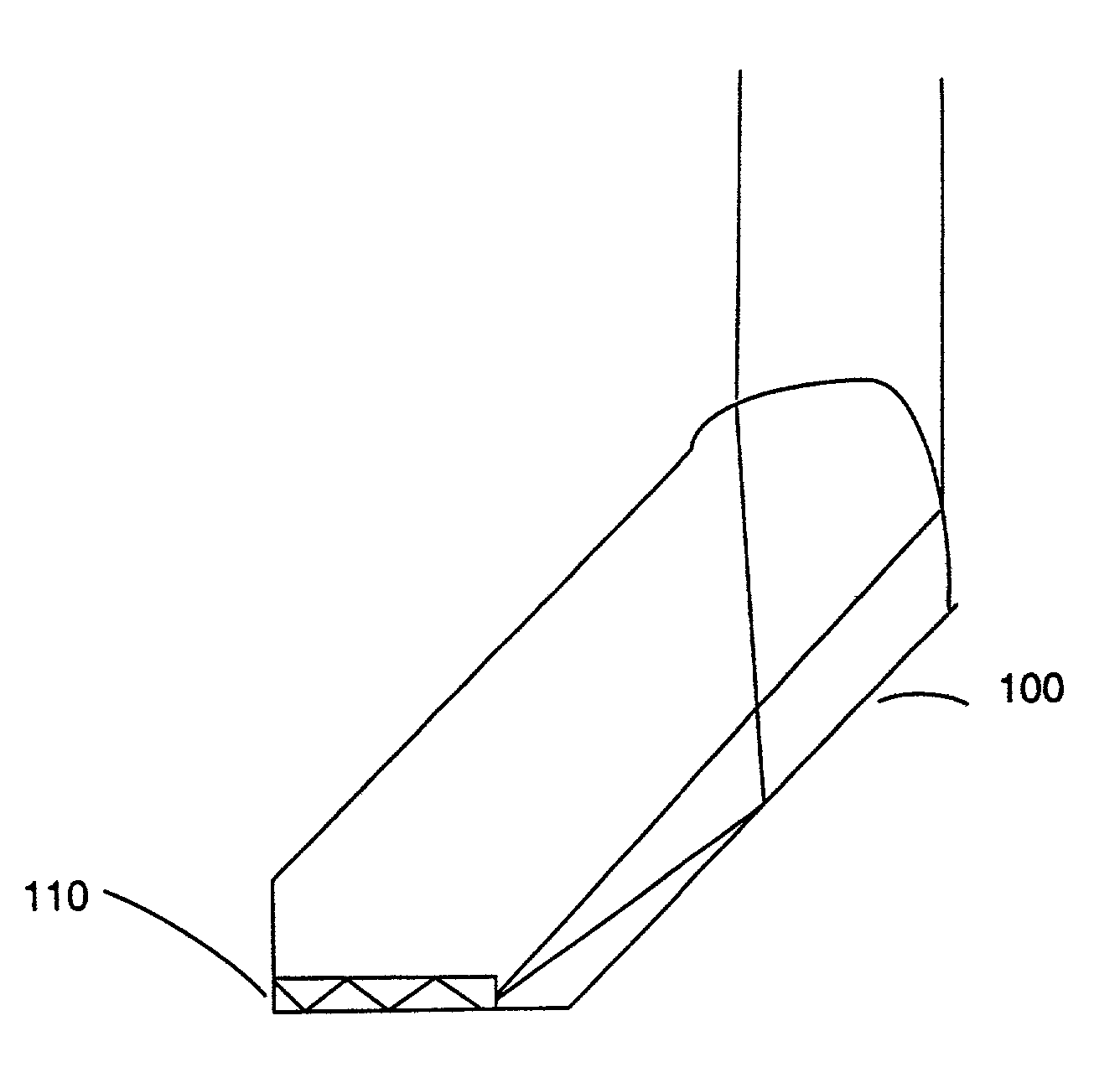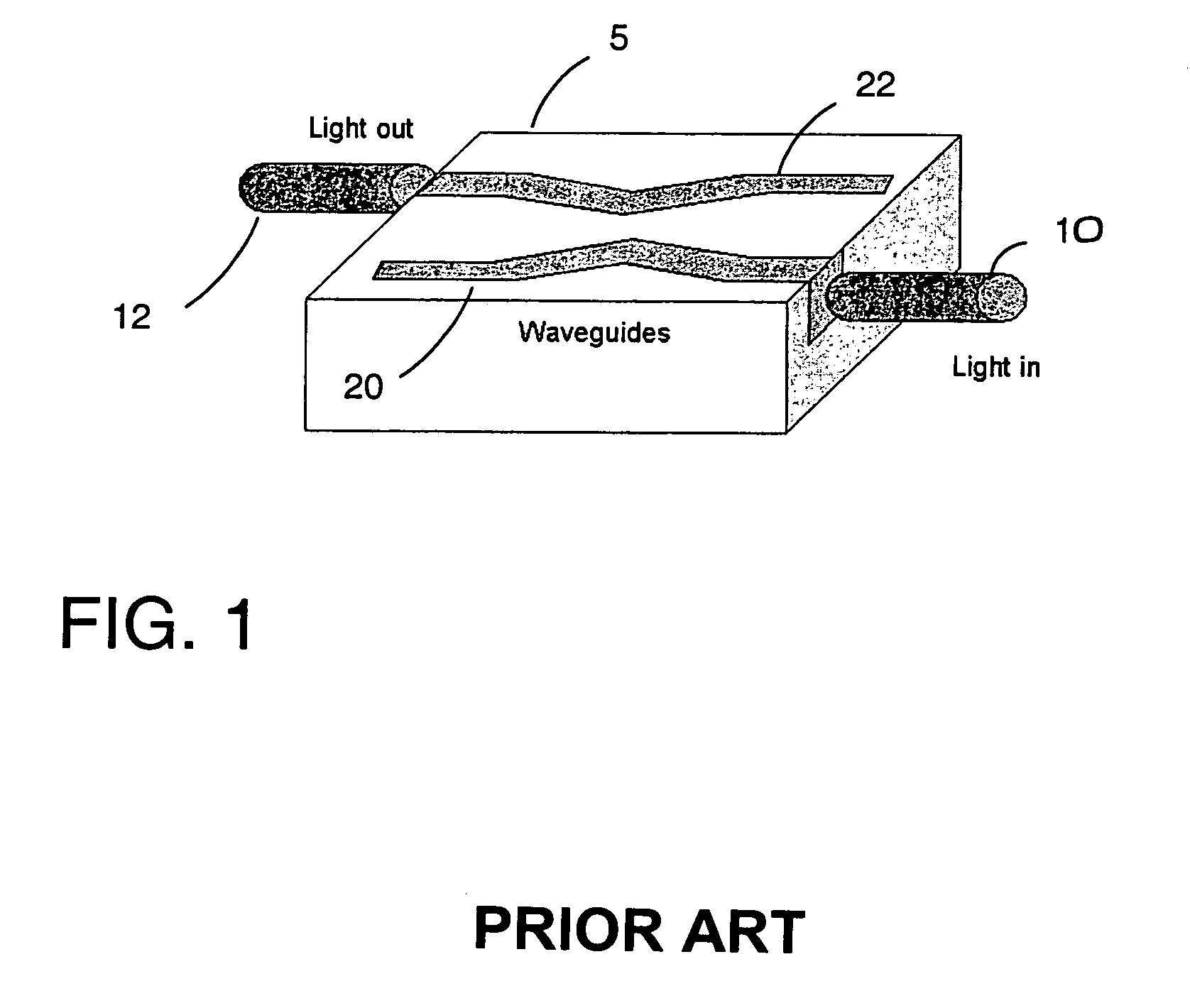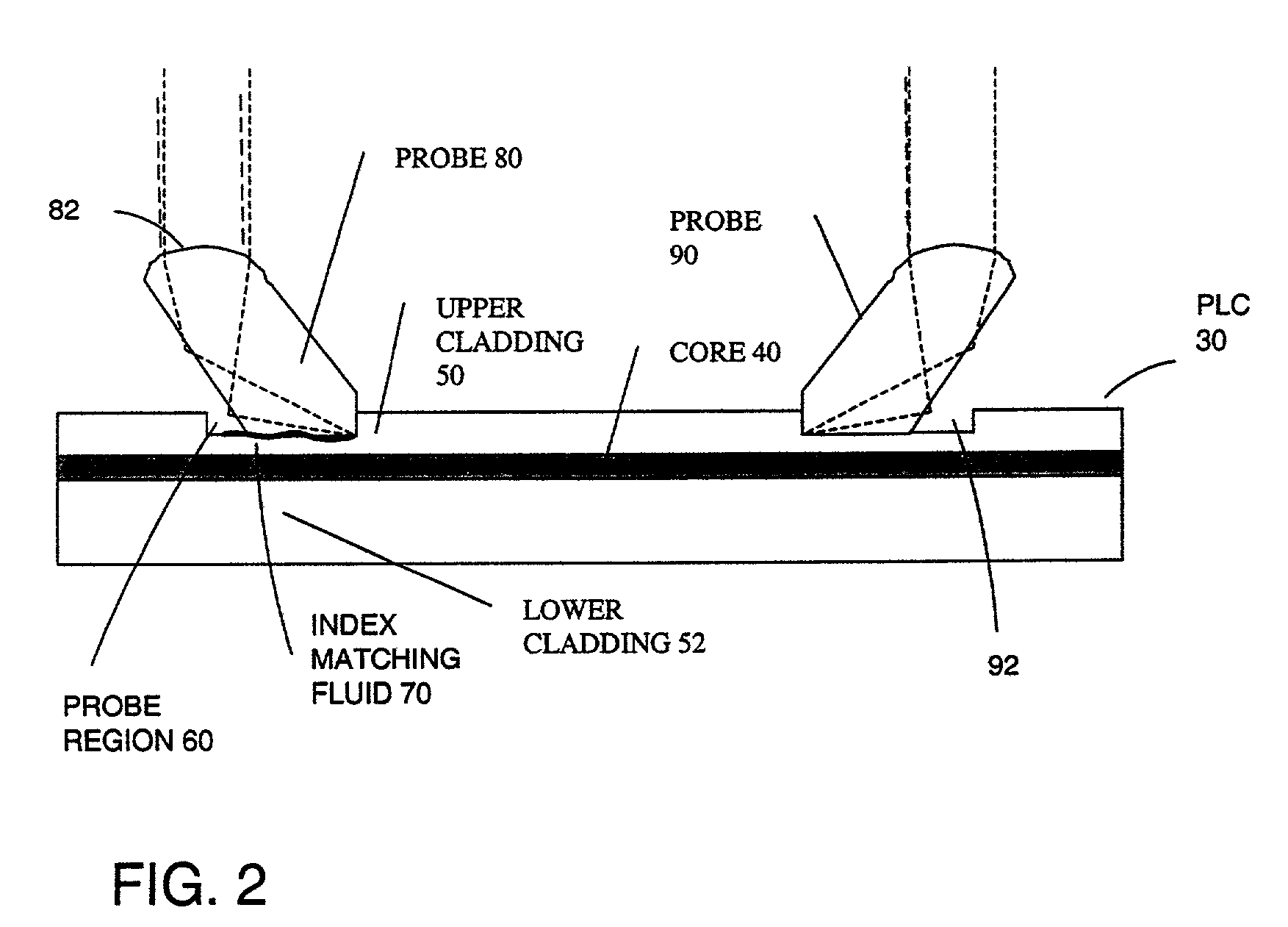Optical probe for wafer testing
a technology of optical probes and wafers, applied in the field of optical probes for testing optical circuits, can solve the problems of waste of time and effort, fiber mounting, and unable to fully test the device, and the device formed with optical fibers would typically be much larger or not feasible at all
- Summary
- Abstract
- Description
- Claims
- Application Information
AI Technical Summary
Problems solved by technology
Method used
Image
Examples
Embodiment Construction
[0012]A method of testing a planar lightwave circuit is achieved by positioning an optical probe in a probe region over a waveguide. In one embodiment, the probe region comprises a waveguide core layer that has either no upper cladding deposited yet, or has a very thin layer of upper cladding deposited. In another embodiment, the probe region has had its upper cladding at least partially removed, e.g., by etching. The remaining upper cladding may be approximately 2 microns or less. In some cases part of the waveguide's core layer may also be removed. A second probe may be used in combination with the first probe to test the planar lightwave circuit by sending and receiving a light beam through the planar lightwave circuit.
[0013]FIG. 2 is a cross-sectional schematic diagram of an optical probe used to test a planar lightwave circuit (PLC) 30. The PLC 30 comprises a waveguide having a core layer 40 and lower cladding 52.
[0014]An optical probe 80 is coupled to the PLC 30 in a probe reg...
PUM
 Login to View More
Login to View More Abstract
Description
Claims
Application Information
 Login to View More
Login to View More - R&D
- Intellectual Property
- Life Sciences
- Materials
- Tech Scout
- Unparalleled Data Quality
- Higher Quality Content
- 60% Fewer Hallucinations
Browse by: Latest US Patents, China's latest patents, Technical Efficacy Thesaurus, Application Domain, Technology Topic, Popular Technical Reports.
© 2025 PatSnap. All rights reserved.Legal|Privacy policy|Modern Slavery Act Transparency Statement|Sitemap|About US| Contact US: help@patsnap.com



